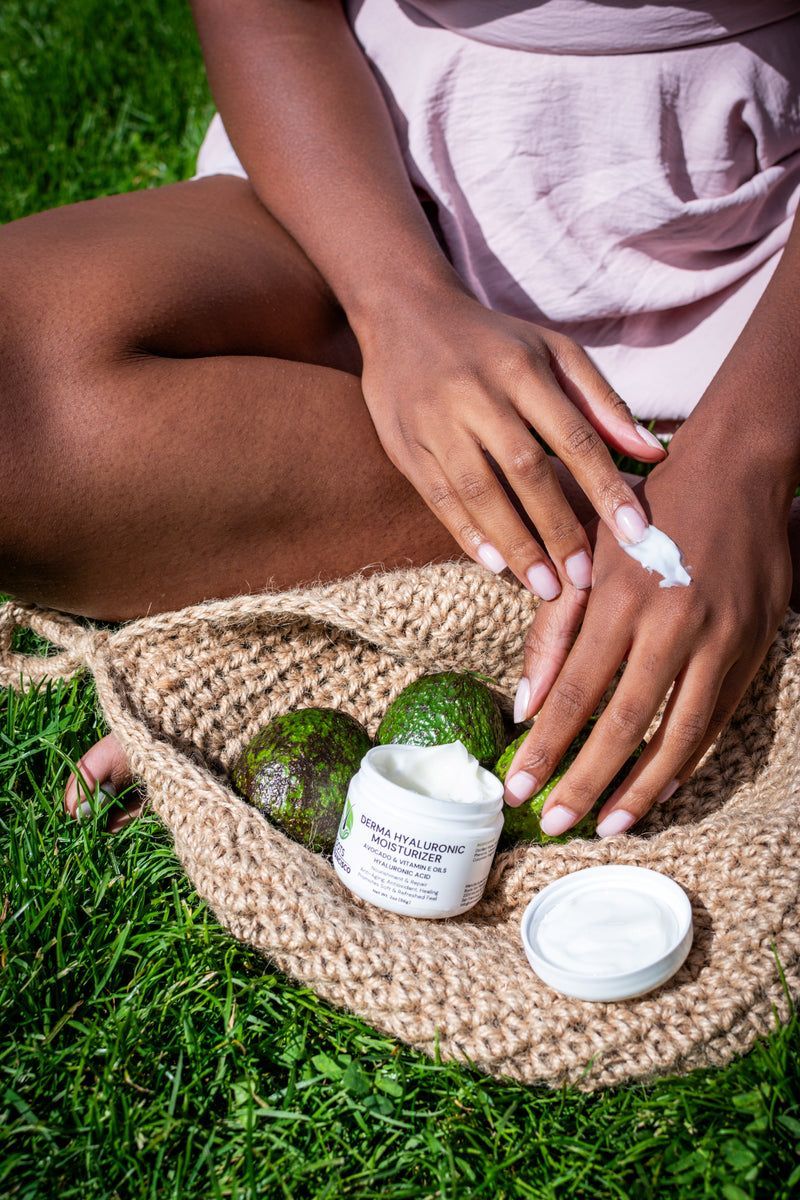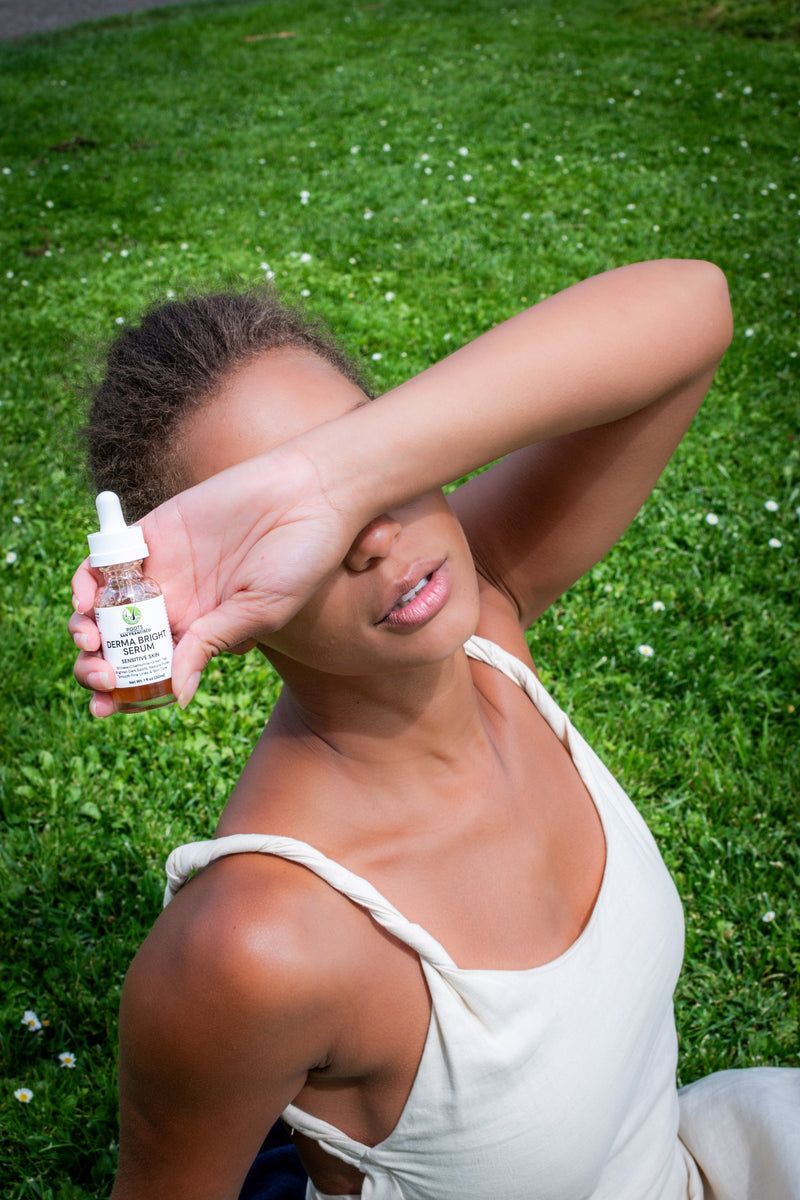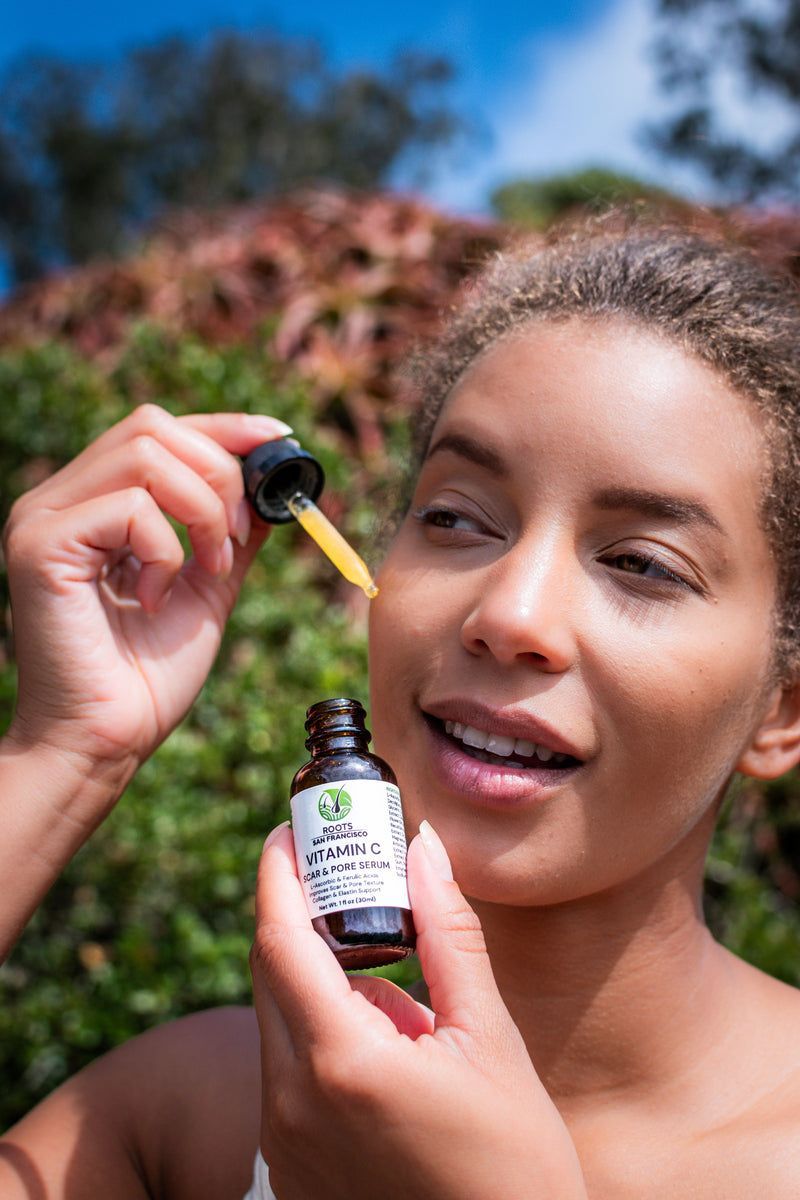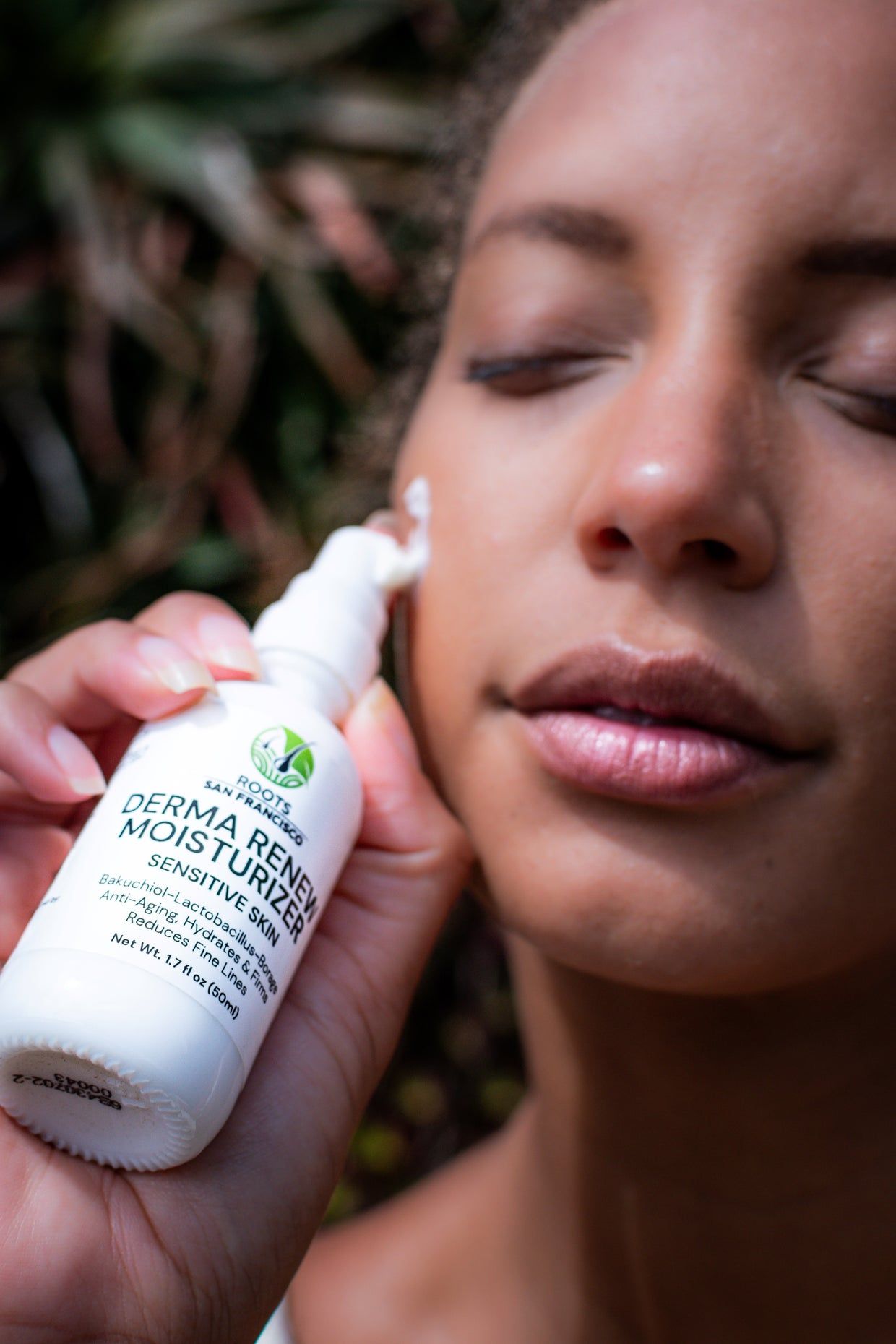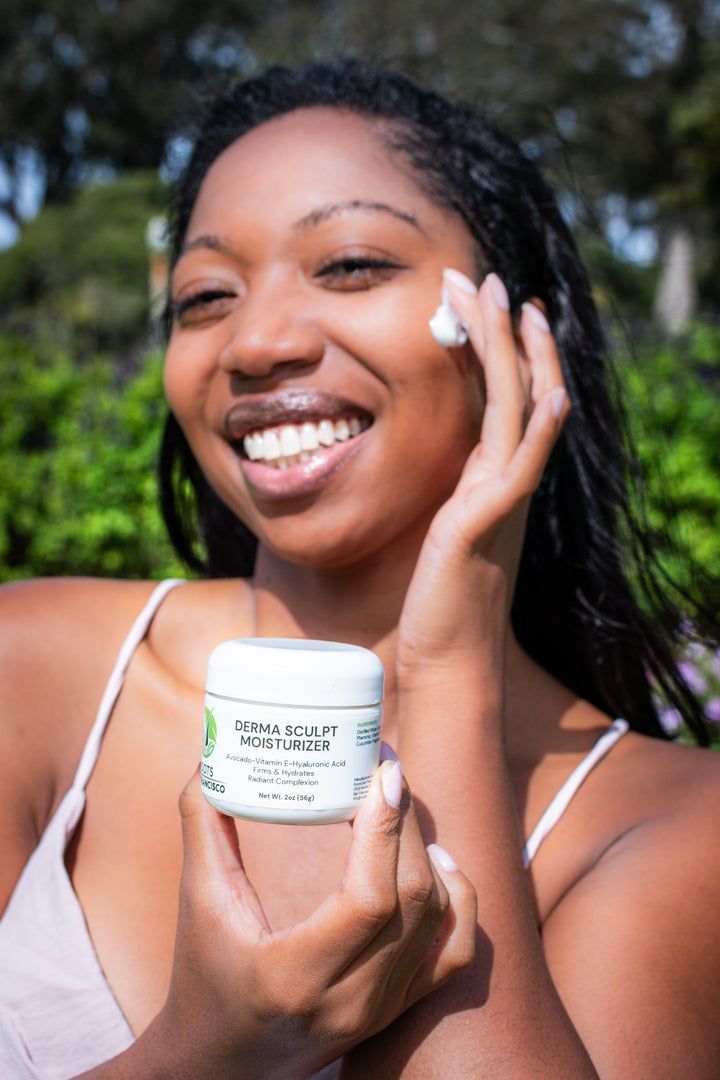7 Different Types of Face Serums and Their Uses: The Ultimate Guide
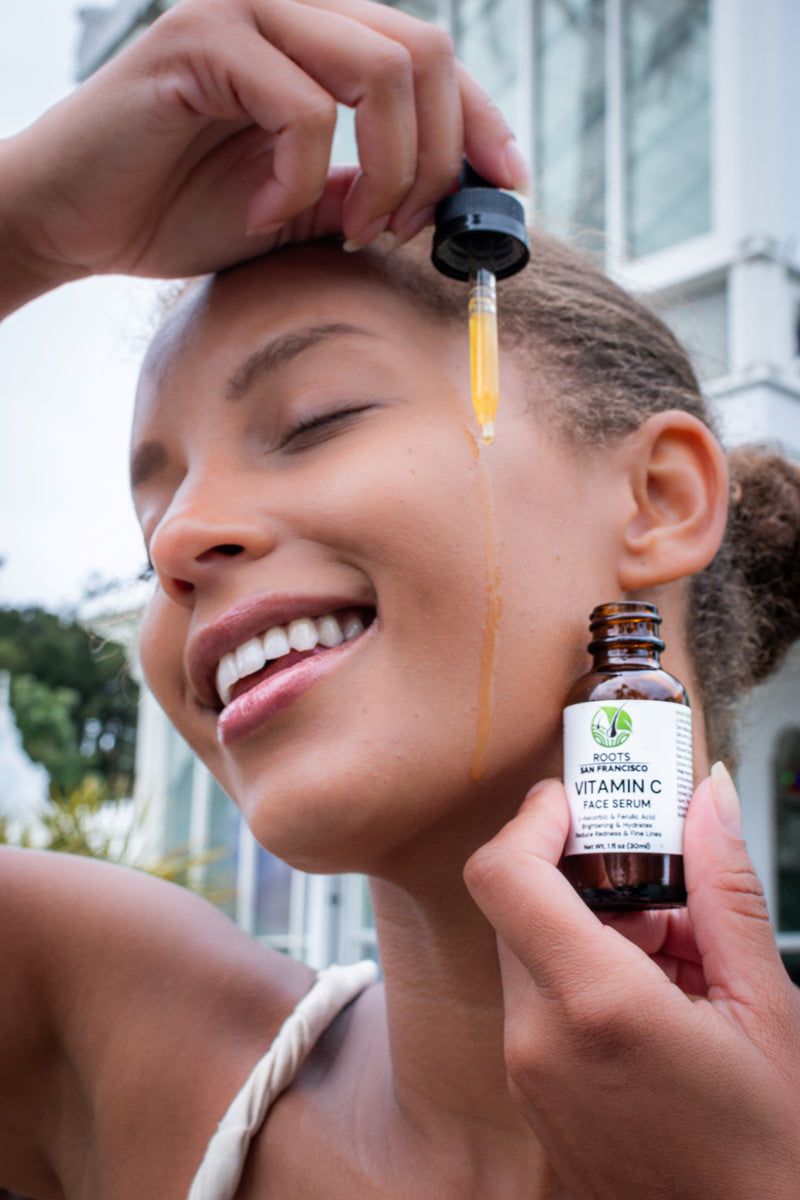
Brightening, repairing, anti-aging, hydrating - the list goes on. I’ve seen many skincare enthusiasts feel lost in the options when it comes to types of face serums and their uses.
Well, I can't blame them. The stakes are high when choosing one from so many serums available. And it feels more like picking a wedding dress than grabbing a simple product.
Don't worry. We got you here at Roots San Francisco! This ultimate guide breaks down each facial serum type so you’ll know exactly where to spend your money to get the best possible result for your skin.
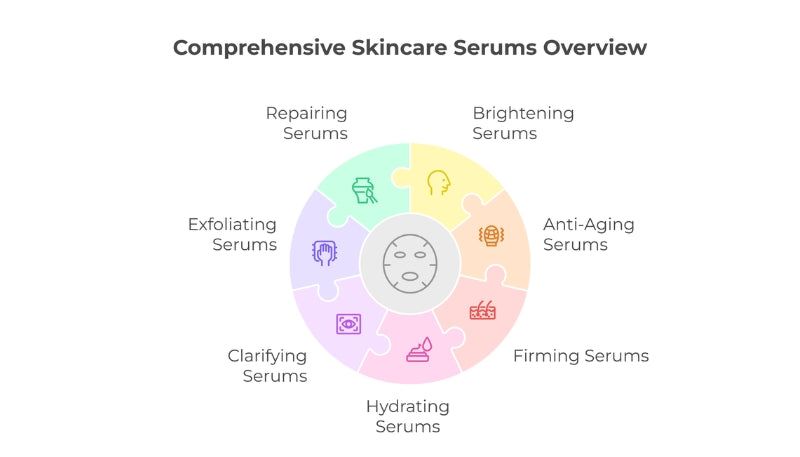
Types of Face Serums and Their Uses
| Serum Type | Best For | Solves | Skin Benefits |
|---|---|---|---|
| Brightening | Extra Glow | Dullness, Dark Spots, Discoloration | Evens out skin tone, enhances glow, smooths texture |
| Anti-Aging | Younger-Looking Skin | Fine Lines, Wrinkles, Loss of Elasticity | Reduces the appearance of fine lines and wrinkles, supports collagen production |
| Firming | Lifted Look | Loss of Firmness, Sagging, Weak Skin Structure | Improves elasticity, tightens skin, provides a lifted effect |
| Hydrating | Deep Moisture | Dryness, Dehydration, Rough Texture | Locks in moisture, plumps skin, strengthens barrier |
| Clarifying | Acne-Free Skin | Breakouts, Excess Oil, Clogged Pores | Clears out pores, reduces shine, prevents acne |
| Repairing | Restoring & Soothing Skin | Redness, Irritation, Damaged Skin Barrier | Calms inflammation, repairs damaged skin, reinforces hydration |
Face serums aren't equal and combat different skin concerns. Let me provide you with more details. We'll discuss the following:
- Serum's exact role
- How they work for your skin
- The common active ingredients they contain
1. Brightening Serums: Glow Like You Mean It
Brightening serums can give you that fresh morning look everyone loves. They lessen the dark spots' appearance, smooth out discoloration, and bring back that glow. If dullness or pigmentation ever made you reach for extra concealer, a brightening serum, like vitamin C, belongs in your routine.
This type of serum helps skin look clear and radiant by reducing melanin overproduction—the main reason for dark spots. Some lighten pigmentation, while others gently exfoliate, clear away old cells and let new ones come through.
Our Vitamin C Serum is a great example of an effective brightening serum! It evens your skin tone and protects it from outside forces that make it look dull.
Common Brightening Serums' Active Ingredients
| Ingredient | What It Does | Best Time to Use |
|---|---|---|
| Vitamin C | Brightens skin, fades dark spots, and supports collagen | Morning (always wear SPF) |
| Niacinamide | Blocks melanin transfer, reduces redness, and strengthens the skin barrier | Morning or night |
| Kojic Acid | Stops melanin production to lighten pigmentation over time | Night (use SPF in the morning) |
| Glycolic Acid | Removes dull skin and clears out pores for a smoother surface | Night (follow with hydration) |
2. Anti-Aging Serums: Rewind in a Bottle
Anti-aging serums help fine lines, wrinkles, and sagging slow their roll. We may not be able to stop time, but we can enjoy the youthful look and slow down signs of aging with this skincare product.
What’s the secret behind anti-aging face serums? Collagen. Our body produces it naturally and keeps skin firm and plump. But as the years add up, collagen production slows. Wrinkles and fine lines start waving and appearing.
Harsh outside and inside factors like sun, pollution, and stress act like bullet trains, speeding up this process. Anti-aging serums support collagen production and shield your skin from free (and dangerous) radicals.
Common Anti-Aging Serums' Active Ingredients
| Ingredient | What It Does | Best Time to Use |
|---|---|---|
| Retinol | Speeds up cell renewal, smooths fine lines, and supports collagen | Night |
| Peptides | Signals skin to produce collagen, keeping it firm and bouncy | Morning or night |
| Ferulic Acid | Neutralizes free radicals and slows visible aging | Morning (best paired with vitamin C) |
| Sea-Fennel Extract | Defends against oxidative stress and supports a stronger skin barrier | Morning or night |
3. Firming Serums: Defy Gravity
Firming serums help lift and tighten the skin when time starts pulling it down. Collagen and elastin are two things that keep your skin firm and bouncy. Fine lines settle in, our skin starts to lose structure, and elasticity takes a hit once our body slows down its production.
These serums typically support collagen, hydrate, and strengthen your skin again. They work like laces on your favorite sneakers—when tight and secure, everything stays in place. Firming serums reduce the appearance of fine lines and give skin the structure it needs to stay firm.
Common Firming Serums' Active Ingredients
| Ingredient | What It Does | Best Time to Use |
|---|---|---|
| Vitamin C | Defends collagen from free radicals and brightens skin | Morning (always with SPF) |
| Retinol | Speeds up skin renewal and firms texture | Night (follow with SPF in the morning) |
| Niacinamide | Improves elasticity and strengthens skin | Morning or night |
| Ceramides | Defends against oxidative stress and supports a stronger skin barrier | Morning or night |
4. Hydrating Serums: Buttery-Smooth Finish
Dry skin? No more! Hydrating serums lock in moisture and help your skin stay hydrated throughout the day. This is the go-to serum for your face to feel like a fresh-baked brioche.
This serum for dry skin hydrates by attracting moisture from the air (when humidity allows) and drawing water into the skin for a plumper look. Give your skin a plump, dewy finish and say goodbye to dry, flaky patches with a hydrating serum like hyaluronic acid.
Common Hydrating Serums' Active Ingredients
| Ingredient | What It Does | Best Time to Use |
|---|---|---|
| Hyaluronic Acid | Attracts and retains water, helping skin look full and bouncy | Morning or night |
| Glycerin | Pulls moisture into the skin | Morning or night |
| Vitamin E | Hydrates while protecting against free-radical damage | Morning or night |
5. Clarifying Serums: Fresh Face, Fresh Start
Clogged pores? Oily skin? Clarifying serums can help you break free from acne-prone skin! They target congestion, reduce shine, and clear breakouts before they even start.
The natural oil from our body keeps our skin hydrated. Problems only arise when there's too much of it—trapped bacteria + clogged pores might trigger breakouts, blackheads, and that greasy look we vow to avoid. Use face serum like this to control excess oils and prevent future flare-ups with clean and balanced skin.
Common Clarifying Serums' Active Ingredients
| Ingredient | What It Does | Best Time to Use |
|---|---|---|
| Salicylic Acid (BHA) | Clears pores, removes dead skin, and dissolves trapped oil | Night (use SPF in the morning) |
| Niacinamide | Regulates oil production, soothes redness, and strengthens skin barrier | Morning or night |
| Zinc | Calms inflammation and helps control sebum production | Morning or night |
| Tea Tree Extract | Naturally fights bacteria and reduces breakouts | Morning or night |
| Willow Bark Extract | Gently exfoliates, prevents clogged pores, and reduces oil buildup | Night (use SPF in the morning) |
6. Exfoliating Serums: Dullness Buster
Dodge dead skin cell pile-up with an exfoliating serum. I think it's clarifying serum’s sister because of their similarities. But they also have different personalities.
Exfoliating serums set their eyes on rough, dry, and flaky skin, while their sibling focuses on clogged pores and excess oil (so don't be confused). They do, however, make your skin more radiant and glowing. #Skingoals!
We vote for exfoliating serums rather than using scrubs. Scrubs use rough particles to remove dead skin physically. But exfoliating serums contain acids that dissolve dead cells without harsh friction.
Common Exfoliating Serums' Active Ingredients
| Ingredient | What It Does | Best Time to Use |
|---|---|---|
| Glycolic Acid (AHA) | Removes dead skin cells and brightens skin tone | Night |
| Lactic Acid (AHA) | Hydrates while gently exfoliating | Night |
| Salicylic Acid (BHA) | Clears pores and reduces breakouts | Night |
| Citric Acid (AHA) | Brightens skin and provides antioxidant protection | Night |
| Malic Acid (AHA) | Gently exfoliates and improves skin texture | Night |
7. Repairing Serums: Reset and Restore
Repairing serum is the healer and protector of damaged skin. After everything your skin goes through—pollution, stress, harsh weather, and aggressive treatments—it needs serious care.
This Bob-the-builder-inspired serum helps restore, strengthen, and soothe. It replenishes moisture, rebuilds the skin barrier, and reduces irritation. If skin feels extra sensitive, over-exfoliated, or tight, this serum restores balance and brings comfort. Some of its active ingredients help calm inflammation, while others strengthen the skin’s natural defense against future damage.
Common Repairing Serums Active Ingredients
| Ingredient | What It Does | Best Time to Use |
|---|---|---|
| Ceramides | Strengthen the skin barrier and lock in moisture | Night & Morning |
| Centella Asiatica (Cica) | Calms irritation and supports healing | Night & Morning |
| Panthenol (Vitamin B5) | Hydrates and speeds up skin recovery | Night & Morning |
| Niacinamide | Reduces redness and strengthens skin | Night & Morning |
| Peptides | Help repair and support collagen production | Night |
How to Get Most From Your Serums
Adding serums to your skincare routine is already a good idea! But there are ways to make them work even better.
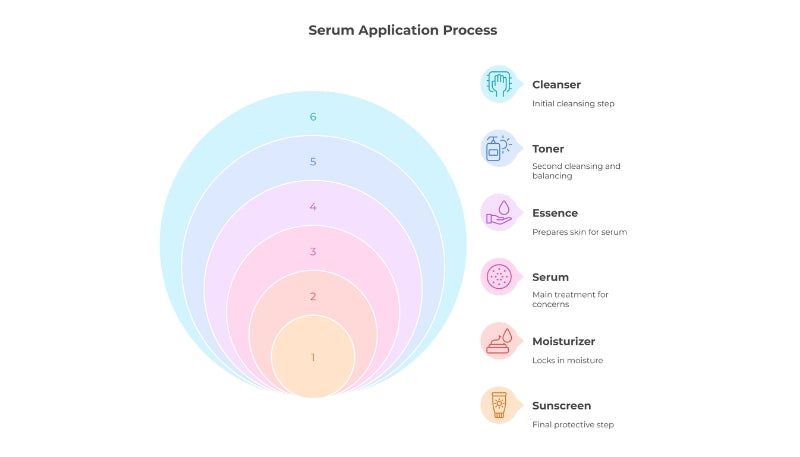
1. Learn Proper Layering
Layering happens when you apply skincare products in the right order, letting each one do its job without interference . Think of it like stacking a burger—bun, patty, toppings, sauce—each layer belongs in a specific spot. Apply products randomly, and they won’t penetrate the skin properly or work as well.
Here's a layering guide you can follow or based on:
- Cleanser. Remove all the dirt on your face. Give way to the other skincare products.
- Toner. Do the second round of cleansing and balance your skin's PH level.
- Essence. Hydrate and prep your skin so it can absorb the serum better.
- Serum. Time for the main character! Apply this to target your skin concerns, like dryness, fine lines, or breakouts.
- Moisturizer. Seal the hydration and give love to your skin barrier.
- Sunscreen (AM routine). Double your protection against UV rays and damage.
Put on the products in this order, and your skincare routine will work better. Let each layer absorb before moving on to the next, and watch your serums do what they do best.
2. Use the Right and Best Face Serum
The right serum will give you the best (and the fastest) results. I say this like a mantra to my clients. It's like taking Tylenol instead of allergy medicine when you have a headache.
- Issues with dull skin and discoloration? A brightening serum might work well to lighten your skin tone.
- Fine lines and wrinkles starting to show? Grab an anti-aging serum with retinol or ferulic acid.
- Unstoppable acne breakout? A clarifying serum with salicylic acid or zinc might be the best decision.
- Dry skin making your face look tired? A hydrating serum is your best friend.
Choose the right serum, and let it do the work. Skincare works best when you give your skin exactly what it needs.
3. Stick to One Serum
Serums are highly concentrated. Mixing and matching them with multiple active ingredients might sound like a good idea, but it can backfire. Overloading your skin with different serums can strip away moisture, weaken the skin barrier, and cause irritation.
We are not against experimenting (we think it's cool!), but remember that your face isn't a science project. Some ingredients don’t play well together. And unless the serum you're using already combines them (i.e., some serums have vitamin C + E or retinol + peptides), layering the wrong ones can cancel out their effects or cause irritation.
FAQs About Face Serums
Which serums cannot be used together?
Certain serums should not be used together due to potential irritation or reduced effectiveness:
- Retinol + Vitamin C. Cause irritation due to differing pH levels.
- Retinol + AHAs/BHAs. Increases sensitivity and risk of over-exfoliation.
- Vitamin C + AHAs/BHAs. Lead to excessive skin irritation.
- Niacinamide + Vitamin C. May reduce effectiveness due to pH differences.
- Benzoyl Peroxide + Retinol. Cancel out each other and lessen efficacy.
Can I leave the serum on my face overnight?
Yes, you can apply face serum at night. Many serums work well in the morning and evening, but nighttime use is ideal for ingredients like retinol and peptides supporting skin repair.
Which type of face serum is best for beginners?
The best face serum for beginners is a hydrating formula with hyaluronic acid. It's safe for all skin types. Niacinamide is another great option because it strengthens the skin barrier. Avoid strong actives like retinol or high-concentration acids.
Do I need both serum and moisturizer?
Yes, using both serum and moisturizer is beneficial. Serums deliver concentrated active ingredients to target specific skin concerns, while moisturizers lock in hydration and create a protective barrier.
Find Your Perfect Serum At Roots San Francisco & Glow With Confidence
Now that you know the types of face serums and their uses, which one do you think you need? Is it the anti-aging, repairing, or brightening serum?
Picking the right serum makes all the difference. Apply it properly, avoid ingredient clashes, and stick to a routine that works for your skin.
At Roots San Francisco, we create skincare that supports your skin’s health and overall well-being. Want to find a serum that delivers results? Check out our collection here.
